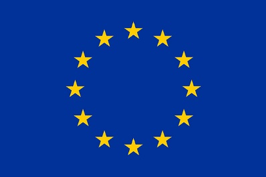By: Hanna Köttl, Laura Allen, Wenqian Xu
What happens if we are forced to stay at home over weeks or months? If we are not allowed to see our friends and family members in person?
This sounds like a cruel “social experiment,” yet, the world-wide COVID-19 pandemic confronts us with exactly this unimaginable scenario.
Importance of Internet connectedness in the time of COVID-19
Within weeks COVID-19 totally transformed our everyday life. With people staying at home, schools and offices closed, coffee places and bars locked down, and public or health services reduced to a minimum, all to slow the spread of COVID-19.
The Internet has, more than ever, become the major site for everyday life participation. Online grocery shopping, e-banking, video-calling, e-learning, and online medical or governmental services are not only convenient or valuable assets, but are necessary tools to stay socially engaged, supplied and healthy. For all ages, Internet access and engagement in digital technology, such as smartphones, laptops, drones and bots, have now become crucial means to ensure basic everyday needs concerning work, leisure, education and social interaction.
Internet connectedness is a prominent contributor to improving people’s living circumstances and mitigating the spread of coronavirus. Yet, this is only possible if all individuals are digitally literate and if universal Internet access and support systems for adapting new technologies are provided to ALL members of society.
Digital exclusion of older adults and people with serious underlying medical conditions
More than ever, the digital divide becomes apparent. Statistics from eurostat show that only 61% of all 65 to 74-year old Europeans have used the Internet within the last three months in 2019. Of course, these numbers vary greatly across Europe from 89% in Denmark and the Netherlands, to 29% in Greece or 33% in Portugal (eurostat). Additionally, a report from the Pew Research Center shows that Internet access and use among American older people, especially those oldest-old, remained comparatively low in spite of a steady increase.
At the same time, people with a chronic medical condition, those with a weakened immune system, and all older adults are considered particularly vulnerable to COVID-19 contraction and resulting in severe illness. They are strongly encouraged to stay home or in residential care and cut off all possible real-life contact to their loved ones and friends, as a prominent way of reducing infection risk.
Agency in social connectedness
Indeed, communication via video-call or online services are widely accepted and desired means by older adults themselves to maintain an autonomous lifestyle and stay socially connected. More than ever, grandchildren, children or friends are called upon to show intergenerational solidarity, by supporting older individuals in their digital technology adaptation and by staying closely connected.
Various initiatives in many countries already creatively highlight intergenerational online activities and projects. Neighbors setting up help systems via Facebook groups, instructors hosting online dancing classes, grandchildren using facetime to stay connected to their grandparents or nursing homes implementing online services to ensure social interaction, are just a few examples. It is inspiring to see how we are united while physically distanced from each other.
However, we are also cautious in drawing an overly positive and potentially distorted picture of older people’s internet use in times of corona. We want to stress that the older population is highly heterogeneous; people indeed have different opportunities and resources that may hinder or help access to digital advancements, as well as personal preferences in usage, during Corona and afterwards.
We call for …
Policies narrowing the digital divide and ensuring digital inclusion are urgently needed. Easy, equal and affordable access to the Internet can improve the wellbeing of older people and promote greater intergenerational solidarity during this COVID-19 outbreak.
As members of the EuroAgeism Innovative Training Network we call for the exchanging of knowledge and good practices of avoiding age discrimination, as well as greater awareness to ageist stereotypes and practices in the time of COVID-19.
Please share your examples and ideas with us on Twitter by @ITNEuroAgeism and tagging #CovidAgeism and #Digitalinclusion.
_________
Hanna Köttl is an occupational therapist and PhD student within the EU H2020 MSCA-ITN EuroAgeism at Bar Ilan University. Her research aims at tackling ageism in the context of everyday technology use by applying an empowerment approach. For more information about Hanna’s work, visit: https://euroageism.eu/projects/addressing-ageism-through-empowerment-and-awareness/
Laura Allen is a PhD fellow within the Marie Skłodowska-Curie Actions ITN EuroAgeism program in the Faculty of Social Sciences at Bar-Ilan University in Israel. Her project is on the spread of ageism in the social network within the long-term care setting. For more information about Laura’s work, visit: https://euroageism.eu/staff/allen-laura/
Wenqian Xu is a PhD fellow in the Division of Ageing and Social Change at Linköping University in Sweden. His doctoral research focuses on social media representation of older people. For more information about his work, visit: https://www.researchgate.net/profile/Wenqian_Xu9


